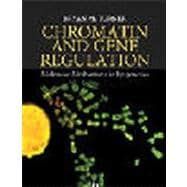
What is included with this book?
Bryan M. Turner is Professor of Experimental Genetics at School of Cancer Sciences, Institute of Biomedical Research, University of Birmingham in Birmingham, UK.
He was educated at University College London, where he earned his BSc in Biochemistry and PhD in Human Biochemical Genetics.
| Preface | xi | ||||
| Prologue | 1 | (6) | |||
|
7 | (18) | |||
|
7 | (1) | |||
|
7 | (2) | |||
|
9 | (4) | |||
|
13 | (12) | |||
|
25 | (19) | |||
|
25 | (1) | |||
|
25 | (4) | |||
|
29 | (5) | |||
|
34 | (4) | |||
|
38 | (1) | |||
|
39 | (1) | |||
|
40 | (1) | |||
|
40 | (4) | |||
|
44 | (15) | |||
|
44 | (1) | |||
|
44 | (6) | |||
|
50 | (9) | |||
|
59 | (16) | |||
|
59 | (1) | |||
|
60 | (2) | |||
|
62 | (10) | |||
|
72 | (3) | |||
|
75 | (26) | |||
|
75 | (1) | |||
|
75 | (5) | |||
|
80 | (3) | |||
|
83 | (4) | |||
|
87 | (2) | |||
|
89 | (6) | |||
|
95 | (6) | |||
|
101 | (25) | |||
|
101 | (1) | |||
|
102 | (5) | |||
|
107 | (1) | |||
|
108 | (2) | |||
|
110 | (3) | |||
|
113 | (2) | |||
|
115 | (6) | |||
|
121 | (5) | |||
|
126 | (20) | |||
|
126 | (1) | |||
|
126 | (5) | |||
|
131 | (7) | |||
|
138 | (3) | |||
|
141 | (5) | |||
|
146 | (26) | |||
|
146 | (1) | |||
|
146 | (7) | |||
|
153 | (5) | |||
|
158 | (4) | |||
|
162 | (3) | |||
|
165 | (7) | |||
|
172 | (24) | |||
|
172 | (1) | |||
|
173 | (2) | |||
|
175 | (1) | |||
|
175 | (4) | |||
|
179 | (1) | |||
|
180 | (3) | |||
|
183 | (8) | |||
|
191 | (5) | |||
|
196 | (25) | |||
|
196 | (1) | |||
|
196 | (9) | |||
|
205 | (16) | |||
|
221 | (28) | |||
|
221 | (2) | |||
|
223 | (13) | |||
|
236 | (13) | |||
|
249 | (26) | |||
|
249 | (1) | |||
|
249 | (4) | |||
|
253 | (8) | |||
|
261 | (7) | |||
|
268 | (3) | |||
|
271 | (4) | |||
| Index | 275 |
The New copy of this book will include any supplemental materials advertised. Please check the title of the book to determine if it should include any access cards, study guides, lab manuals, CDs, etc.
The Used, Rental and eBook copies of this book are not guaranteed to include any supplemental materials. Typically, only the book itself is included. This is true even if the title states it includes any access cards, study guides, lab manuals, CDs, etc.